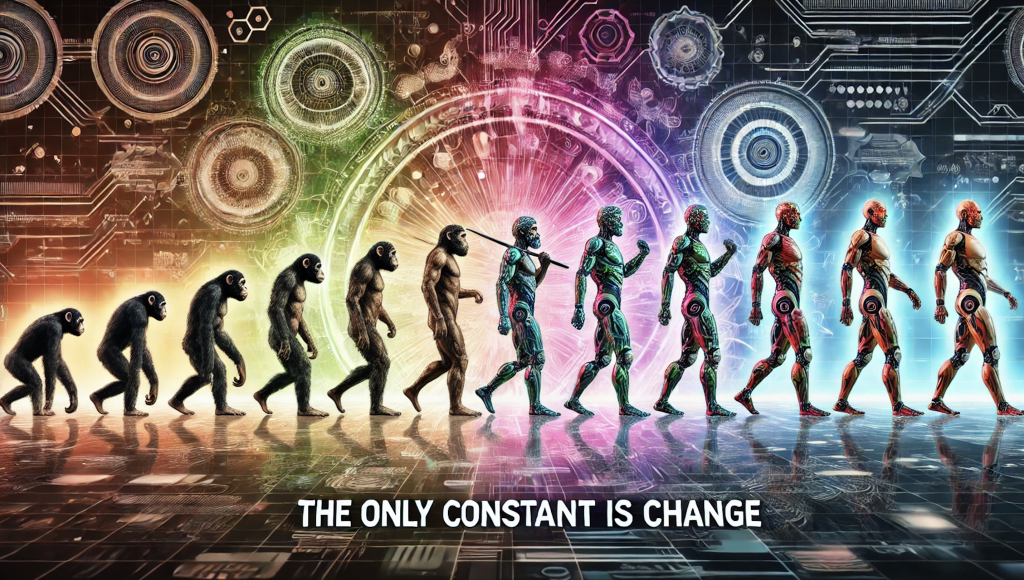In today’s fast-paced business environment, graphic design plays a crucial role in establishing and maintaining a brand’s identity. Whether it’s logos, brand kits, colour palettes, fonts, or supporting graphics, these design elements are vital in communicating a company’s message and values to its audience. However, it’s essential to recognize that these assets are not static or permanent. They must evolve over time to remain relevant and effective. This blog post will delve into why business owners and project operators must embrace the flexibility of their graphic design assets, avoid over-committing to specific designs, and remove emotional and subjective biases from the equation.
Graphic design, much like any other aspect of a business, is subject to the ever-changing dynamics of market trends, consumer preferences, and technological advancements. A design that resonates today might become outdated tomorrow. This is why it’s critical for businesses to maintain a mindset of evolution and adaptability. Sticking rigidly to a particular design can hinder growth and stifle innovation. For instance, a logo that once perfectly captured a company’s essence might no longer align with its expanded product line or its evolved mission. Thus, leaving room for design evolution is not just advisable but necessary for long-term success.
A significant challenge in graphic design is the tendency to over-commit to specific design elements due to emotional attachment or subjective preferences. It’s natural for business owners to develop a fondness for a particular logo or colour scheme, especially if it has been a part of their journey. However, this emotional attachment can blind them to the need for change. It’s crucial to approach design choices with a level of detachment, focusing on what best serves the brand’s objectives rather than personal preferences. By doing so, businesses can ensure their design assets remain dynamic and relevant, rather than becoming stagnant and outdated.
Moreover, it’s essential to adopt a holistic and forward-thinking approach to graphic design. Responsible design thinking, as outlined in Manuel Lima’s “The New Designer,” emphasizes balancing the creation of solutions with anticipating their future consequences. This means understanding that the design process does not end with the delivery of a logo or a marketing graphic. Instead, it involves ongoing evaluation and adaptation. Business owners must consider the long-term implications of their design choices and remain open to modifications as circumstances evolve. This proactive approach can prevent the pitfalls of a static design strategy and ensure the brand remains agile and competitive.
One of the underlying messages from Lima’s insights is the importance of accountability in design. Just as doctors in the 18th century were part of the problem due to their lack of hygiene, graphic designers today can inadvertently contribute to a brand’s stagnation if they ignore the need for design evolution. It’s not enough to create a visually appealing design; it’s equally important to consider its impact over time and its adaptability to changing conditions. By embracing this responsibility, businesses can avoid the trap of over-committing to specific designs and instead foster a culture of continuous improvement and innovation.
In practical terms, this means incorporating flexibility into the design process from the outset. When working with a graphic design agency like Bl3nd Design, it’s essential to communicate the need for designs that can evolve. This could involve creating multiple versions of a logo or developing a brand kit with adaptable dynamic branding. It also means regularly reviewing and updating design assets to ensure they remain aligned with the brand’s goals and market trends. By doing so, businesses can maintain a fresh and contemporary image that resonates with their audience and supports their growth objectives.
In closing, the key takeaway for business owners and project operators is to view graphic design as a dynamic and evolving aspect of their brand strategy and marketing mix. By understanding the importance of flexibility, avoiding emotional and subjective biases, and adopting a forward-thinking approach, they can ensure their design assets remain effective and relevant over time. The insights from Manuel Lima’s work underscore the need for accountability and continuous improvement in design. By embracing these principles, businesses can navigate the challenges of a changing market landscape and achieve long-term success with their design assets. At Bl3nd Design agency, we are committed to helping our clients create adaptable and impactful designs that stand the test of time.
Thank you for reading. If you need guidance in navigating the complexities of evolving graphic design, Bl3nd Design agency is here to assist you, consider contacting us to learn how we can help you save money and achieve outstanding results over time with your graphic design projects.
article citations
Massachusetts Institute of Technology
Fast Company
Design Lab Podcast





















